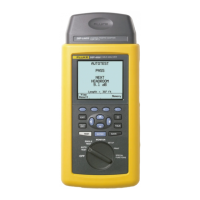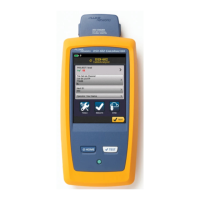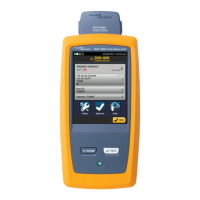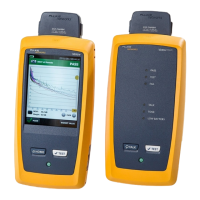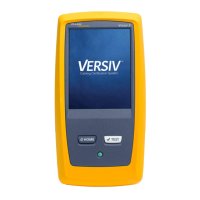DSP-4000 Series
Users Manual
2-38
Determining a Range of Cable IDs for the Auto Sequence Function
Use the following guidelines when determining a range of cable IDs to use with
the auto sequence function.
• Cable IDs can contain a maximum of 18 letters, numbers, and special
characters (such as -, #, and spaces). Accented characters are not available.
• The types of characters used in each position must match between the range’s
start and end ID. For example, using the letter “O” as the third character in the
start ID and the number “0” as the third character in the end ID generates an
error message.
• The auto sequence function increments letters and numbers starting with the
farthest right character, then moving left. Special characters and matching
characters are not incremented. As an example, the following range of cable
IDs could be assigned for testing the cabling in 2 rooms where each room has
3 cable drops:
Start ID: ROOM A DROP#1
End ID: ROOM B DROP#3
The test tool would name the Autotest results in the following sequence:
ROOM A DROP#1
ROOM A DROP#2
ROOM A DROP#3
ROOM B DROP#1
ROOM B DROP#2
ROOM B DROP#3
If you try to save Autotest results after the last ID was used, the list shown after
you press S shows that all IDs are used by saved reports (used IDs are
preceded by a “$”). Use the Edit or New softkeys to create a new ID. See
Chapter 3 for more information.

